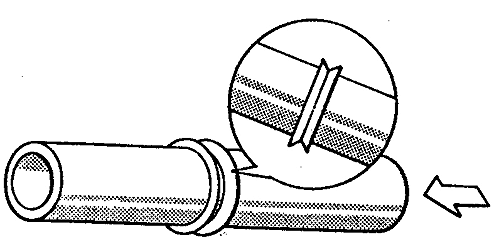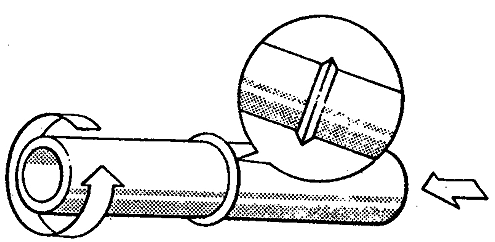THE PROCESS
PRINCIPLES OF FRICTION WELDING
Friction Welding is a "solid state" (no melting) joining process done on a machine tool, that welds circular interface by rotation of one component and axial force between components, to heat and upset material by friction only, with no filler metal, flux, or shielding gas, only parent material loss. Weld strength normally equals or exceeds parent material strength.
In friction welding one component is rotated and one component is held stationary. The part that is rotated is brought into contact with the stationary component and when enough heat has been generated to bring the components to a plastic state and the desired burnoff has been achieved, rotation is stopped. More axial force is then applied between the two components resulting in a solid state bond at the interface forming a friction welded joint.




